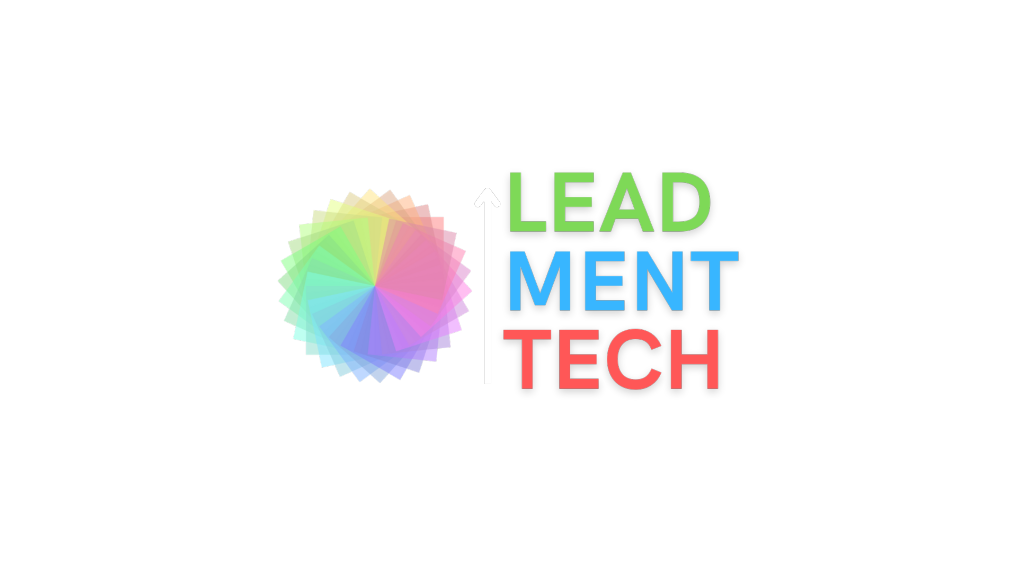Introduction
Debt relief companies are financial service providers that specialize in helping people get out of debt. These companies provide a range of services, including debt consolidation, debt settlement, and credit counseling. However, debt relief companies face several challenges when it comes to acquiring and converting leads into clients.
Lead generation is a crucial aspect of any business, including debt relief companies. However, the real challenge is in converting those leads into paying clients. This is where lead nurturing comes in. Lead nurturing is the process of building relationships with potential customers and guiding them through the buyer’s journey until they are ready to make a purchase.
In this blog post, we will explore the importance of lead nurturing for debt relief companies and why they need to add more nurturing steps between getting a lead and booking an appointment. We will also discuss common mistakes in lead nurturing and provide steps to improve lead nurturing in debt relief companies. By the end of this blog post, you will understand the significance of lead nurturing and how to implement effective lead nurturing strategies in your debt relief company.

Overview of the Debt Relief Industry
The debt relief sector is expanding and provides assistance to those who are having financial difficulties. Several businesses in the sector focus on credit counseling, debt settlement, and debt consolidation. Companies that specialize in debt reduction assist people pay off their debt and stay out of bankruptcy.
Advertising, direct mail, and online marketing are some of the strategies used to generate leads for debt relief businesses. The next step after acquiring a lead is to turn them into a paying customer. Yet, given the nature of debt relief services, the process of turning leads into clients can be difficult.
Getting the trust of potential customers is one of the major obstacles debt relief organizations confront. Many consumers have misgivings about debt relief services and are reluctant to give a stranger access to their financial data. Also, people might not be prepared to commit to a service until they have exhausted all other choices because debt relief programs are sometimes considered as a last resort.
Notwithstanding these obstacles, there is a large demand for debt relief services, and the debt relief sector is expanding. The demand for debt relief will keep rising as more people battle debt. As a result, it’s crucial for debt relief businesses to comprehend the market and create efficient plans for gathering leads and turning them into paying customers.
The Significance of Lead Nurturing
For debt relief organizations in particular, lead nurturing is a crucial component of the sales process. Building relationships with prospective customers and assisting them through the buyer’s journey are both components of the lead nurturing process. The objective is to gain the lead’s confidence and credibility in order to turn him or her into a paying customer.
- Lead nurturing has a number of advantages for organizations that offer debt relief. First of all, it facilitates the development of rapport and trust with prospective customers. This is crucial in the debt relief sector, because building confidence is crucial. Debt relief businesses can demonstrate their knowledge and gain trust from prospective customers by nurturing leads.
- Secondly, lead nurturing helps in guiding prospective customers through the buyer’s journey. The process prospective customers go through when thinking about making a purchase is known as the buyer’s journey. It covers the stages of awareness, consideration, and decision. Debt relief providers may help prospective customers through each step of the buying process and give them the knowledge they need to make an informed choice by nurturing leads.
- Thirdly, nurturing leads promotes higher conversion rates. Debt relief businesses can raise the probability that a lead will convert to a paying customer by developing relationships with prospective clients and assisting them through the buyer’s journey. This is crucial in the debt relief sector, where it can be difficult to turn leads into paying customers.

Ultimately, for debt relief businesses, lead nurturing is a crucial step in the sales process. Debt relief organizations may expand their clientele and assist more individuals in paying off their debt by building relationships with prospective customers, assisting them through the buying process, and boosting conversion rates.
Common Mistakes in Lead Nurturing
Despite the advantages of lead nurturing, many debt relief organizations find it difficult to put good lead nurturing tactics into practice. When it comes to lead nurturing, debt relief organizations frequently make a number of errors. These errors may reduce the success of lead nurturing and keep prospective customers from turning into paying customers.
Lack of personalization: One of the biggest errors debt relief organizations make is not making an attempt to nurture leads personally. Each prospective client is distinct from the next, with their own demands and preferences. Debt treatment providers risk alienating potential customers and losing out on business by neglecting to customize their approach.
Failure to comprehend the client journey: Failing to comprehend the consumer journey is another frequent error. The process that prospective customers go through when thinking about making a purchase is known as the customer journey. Debt relief businesses run the risk of missing opportunities to add value and foster trust with prospective customers by failing to comprehend the customer journey.
Excessive reliance on automation: Lead nurturing might benefit from using automation, but it shouldn’t be the only tactic employed. Companies that offer debt relief run the danger of losing the human touch that is crucial for lead nurturing. This may result in a decreased ability to turn leads into paying customers.

Overall, debt relief companies must avoid these common mistakes in lead nurturing to maximize their effectiveness in acquiring and converting leads. By personalizing their approach, understanding the customer journey, and balancing automation with personalization, debt relief companies can develop effective lead nurturing strategies and grow their business.
Steps to Improve Lead Nurturing in Debt Relief Companies
Debt relief businesses can take a number of actions to enhance lead nurturing and raise conversion rates. Some of the best tactics are listed below:
Customize the Approach: Debt relief businesses should adopt a more individualized strategy to nurture leads. In order to do this, each potential customer’s needs and preferences are taken into account when creating messaging and content. Debt relief businesses may engage with potential customers and boost the possibility that they will become paying customers by adopting a tailored strategy.
Recognize the Customer Journey: Debt relief businesses need to recognize the Customer Journey and adjust their strategy accordingly. This entails offering worthwhile information at every stage of the buyer’s journey and addressing the particular problems and worries of prospective customers.

Leverage Multiple Channels: Debt relief companies should leverage multiple channels in their lead nurturing efforts. This includes email, social media, direct mail, and phone calls. By using multiple channels, debt relief companies can reach potential clients where they are and increase the likelihood of converting them into paying clients.
Provide Value: To establish trust and credibility, debt relief companies must provide value to potential clients. This includes providing educational resources, such as blog posts, webinars, and guides, that help potential clients understand their options and make informed decisions.
Measure and Optimize: To improve lead nurturing over time, debt relief companies must measure and optimize their efforts. This includes tracking key performance indicators (KPIs), such as open rates, click-through rates, and conversion rates, and using this data to make informed decisions about their lead nurturing strategy.
By taking these steps, debt relief companies can improve their lead nurturing efforts and increase their conversion rates. By establishing trust and credibility with potential clients and guiding them through the buyer’s journey, debt relief companies can grow their business and help more people get out of debt.
Best Practices for Successful Lead Nurturing
Debt relief businesses should adhere to best practices to achieve successful lead nurturing. Some of the best tactics are listed below:
- Clear Goals: Debt relief businesses should be very specific with their lead nurturing objectives. This includes identifying their target market, setting KPIs, and developing a strategy to reach their objectives.
- Use a CRM: Debt relief businesses should make use of a customer relationship management (CRM) system to efficiently manage leads. Through the buyer’s journey, a CRM system enables debt relief businesses to track and manage prospects, giving them important insights into their behavior and preferences.
- Debt reduction businesses should divide leads based on the individuals’ behavior and preferences. By doing this, they can better target each category with messaging and content and boost the success of their lead nurturing campaigns.
- Customize Content: Successful lead nurturing relies on personalization. Debt relief businesses should tailor their material to the wants and preferences of each prospective customer. This entails addressing their concerns, utilizing their name, and offering pertinent information.
- Use Several Channels: Debt reduction businesses should pursue leads through a variety of sources. Email, social media, direct mail, and phone calls are all included in this. Debt relief providers can more effectively nurture their leads by using numerous channels to meet potential customers where they are.
- Measure and Optimize: To ensure success over time, debt relief companies should measure and optimize their lead nurturing efforts. This includes tracking KPIs, analyzing data, and making informed decisions about their lead nurturing strategy.
By following these best practices, debt relief companies can ensure successful lead nurturing and increase their conversion rates. By establishing trust and credibility with potential clients and guiding them through the buyer’s journey, debt relief companies can grow their business and help more people get out of debt.
Conclusion
In summary, lead nurturing is an essential part of the debt relief sector. It enables debt relief businesses to build rapport with prospective customers, gain their trust, and help them through the buying process. Yet, a lot of debt relief businesses commit common errors in lead nurturing, which may result in poor conversion rates.
Debt relief businesses should adopt a personalized strategy, comprehend the client experience, use numerous channels, provide value, measure and optimize, and adhere to best practices in order to increase lead nurturing. By doing this, debt relief businesses can boost conversion rates, expand their clientele, and aid in the debt reduction of more people.
Effective lead nurturing ultimately focuses on establishing rapport with prospective customers and giving them the knowledge and tools they need to make wise decisions. Debt relief businesses can build trust and confidence, improve conversion rates, and accomplish their objectives by concentrating on client needs and preferences.

